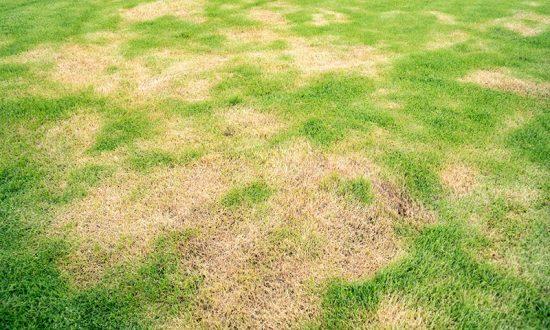Dry Patch - What is it and how can I overcome it?
Dry patch describes an area of lawn that has become dry and discoloured due to a lack of moisture. It should be noted that this is not the same as when the soil is dry as in these circumstances, once the ground has been watered, the issue is resolved. With dry patch this is not the case. In these situations the soil is unable to absorb or retain any water, meaning that even in wet conditions the lawn could be suffering from dry patch. This issue will not resolve itself unless the soil is treated properly, allowing water to be absorbed.
How does a lawn get Dry Patch?
Dry patch can be caused by a variety of different factors; spilt lawn mower fuel, dog urine or insect pests but fungal disease is thought to be the most common cause. As the fungus spreads through the soil, it releases chemicals that cause the soil to become moisture repellent. Alongside this, some lawns are more prone to the condition if they have compacted soil and thick, water proof thatch. Thatch is a build-up of dead grass in your lawn that becomes waxy and water resistant, increasing the chance of fungal disease.
How can I tell if my lawn is affected?
Firstly you will start to notice that areas of your lawn will look dry and discoloured. A good test is to try watering the areas and if water beading or runoff is evident, this signifies a case of dry patch.
What can I do to treat dry patch?
In order to treat dry patch you need to rehydrate the hydrophobic soil. To get the best results it is advised to aerate the lawn to ensure that there is no compacted soil and moisture can enter the soil properly. Most importantly, apply a wetting agent such as Amvista Soil Soaker. This wetting agent reduces soil waterlogging, improves water & nutrient movement from the surface to root zone and combats water repellent soil. In some cases it may be required to overseed certain areas to replace the damaged or dead grass.
Is there any way of preventing dry patch in lawns?
After treating Dry Patch, there are a few steps to follow in order to prevent dry patch from affecting your lawn in future:
- Scarify your lawn – Scarifying your lawn helps to remove layers of thatch from the turf. This is best done in the autumn in order to minimise the risk of dry patch appearing throughout the following year.
- Aerating the lawn – This helps drainage, reduces compaction and reduces water resistance.
- Using fertilisers – Ensuring that your grass has healthy and strong root systems also limits the chance of dry patch appearing. Take a look at our range of fertilisers here





